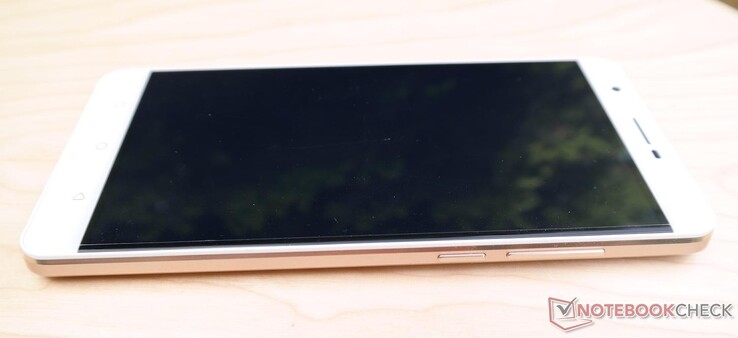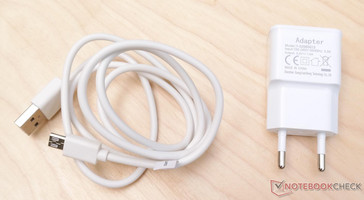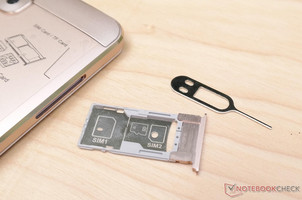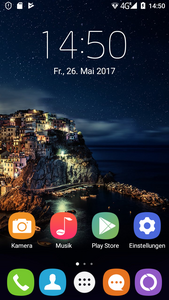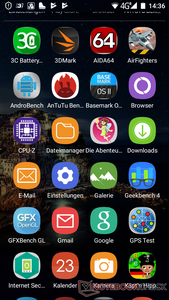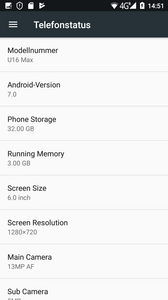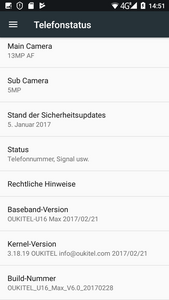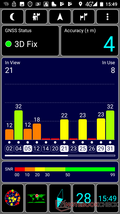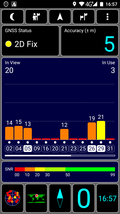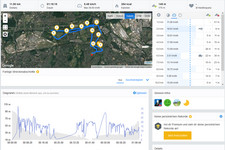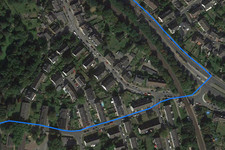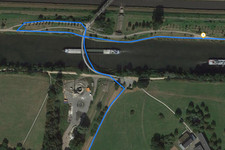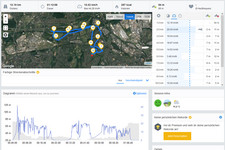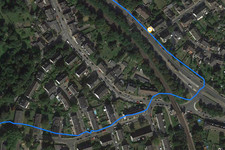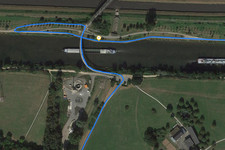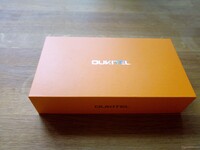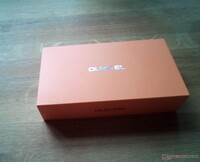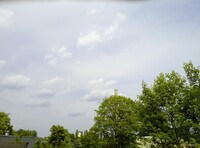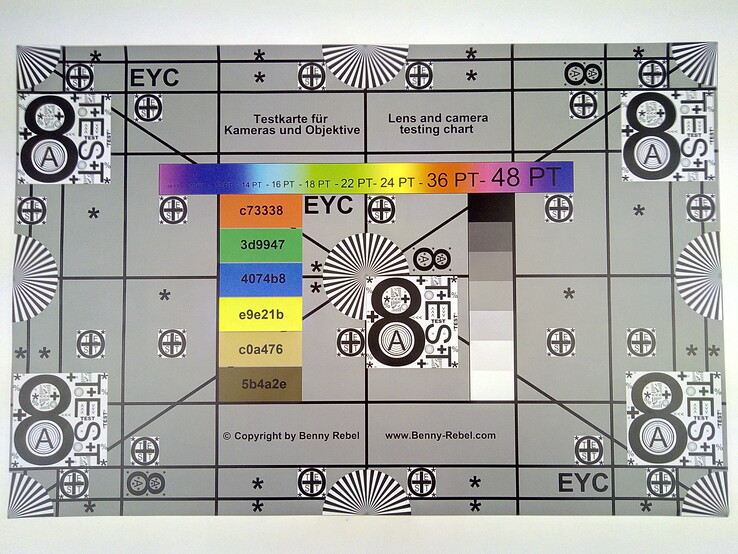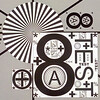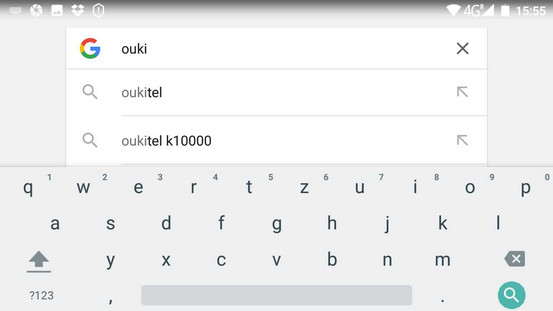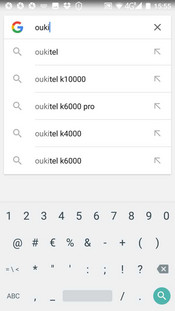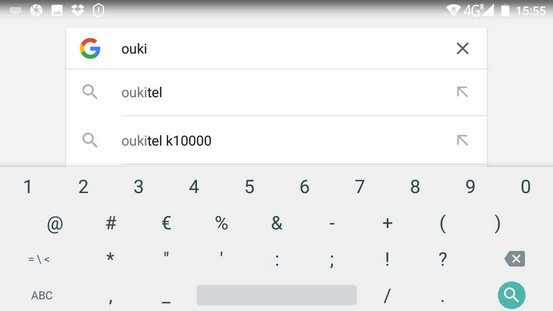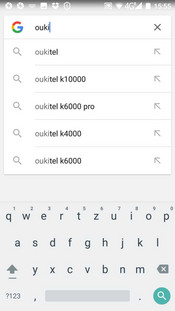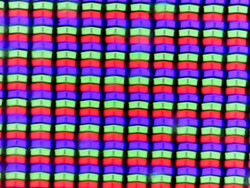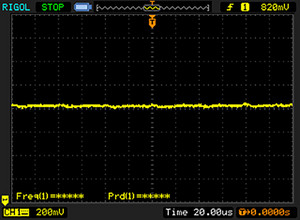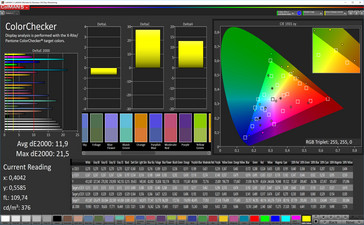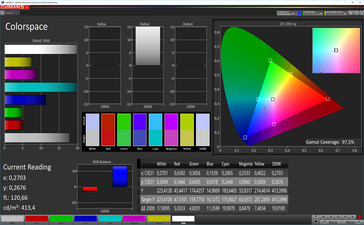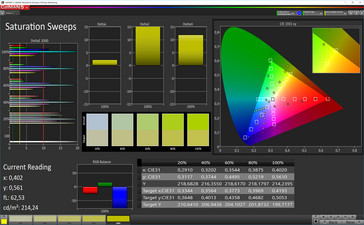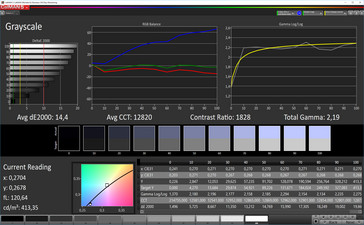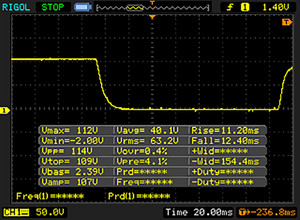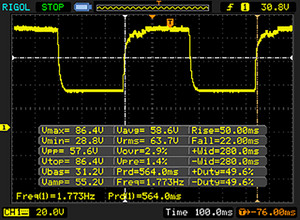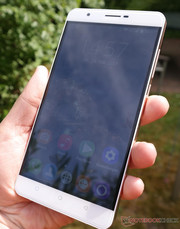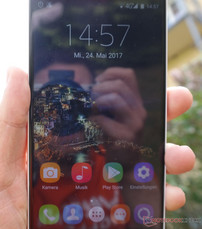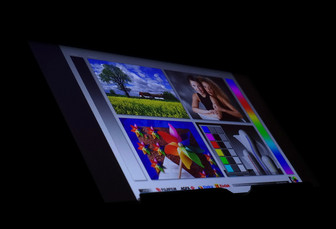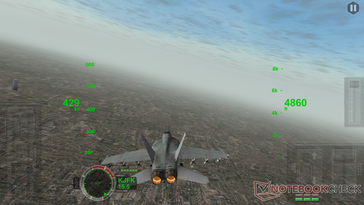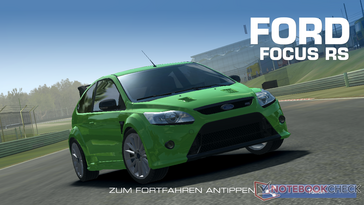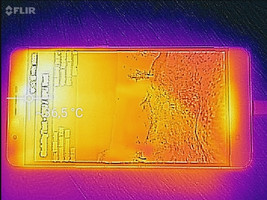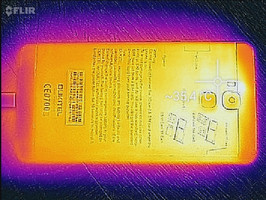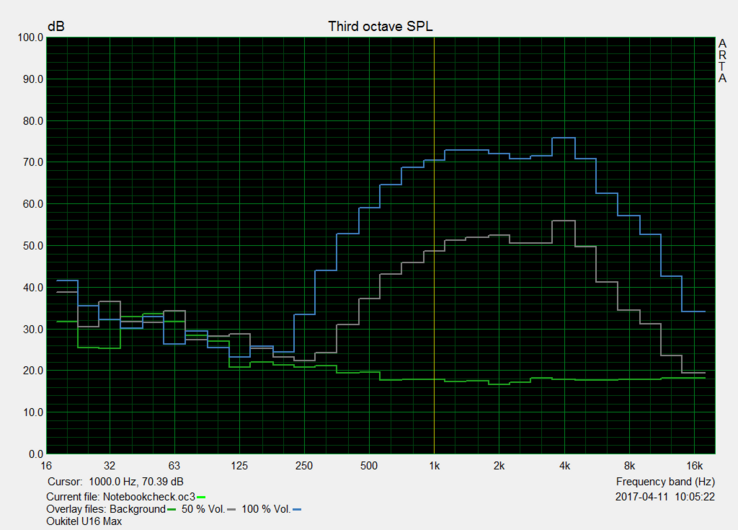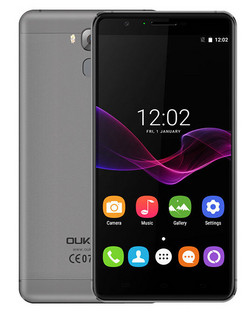Oukitel U16 Max Smartphone Review
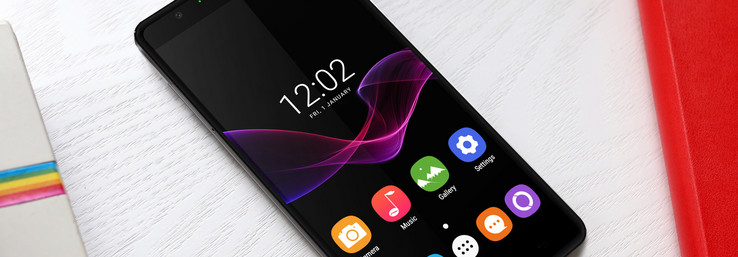
For the original German review, see here.
The Mediatek MT6753 is not really the fastest processor, and nowadays 6-inch screens have a Full HD resolution or more, rather than only 1280x720 pixels. The remaining equipment tries to boast: airplane aluminum! CNC milled! Fingerprint sensor, 3 GB RAM, 32 GB storage, dual SIM, and a fat battery are attractive features. But not all that has a shiny back is gold!
In our test, the Oukitel U16 Max goes against similarly priced Chinese competitors (Elephone P8000, UleFone Metal), as well as competitors that can officially be purchased in Europe (Acer Liquid Z6 Plus, LG Stylus 2) for a slightly higher price.
In the US, the U16 Max starts at around $120 coming from Hong Kong, but most vendors charge around $150.
Case
Oukitel built a very large phablet here. Due to the battery that is quite large at 4000 mAh, the thickness directly corresponds to the heavy weight of 223 grams (~0.49 lb). At this size, using it with one hand is naturally unthinkable.
As for the selection of materials, the U16 Max offers a rather unsuccessful mix of cheap and fancy. The metal back appears very firm and gives the smartphone quite a flashy look. The white plastic in the antenna bands and the USB and headphone ports appears less harmonious in terms of color and workmanship. In the milled parts, the manufacturer keeps its promise. The recesses for the speakers appear well-finished. The camera, flash, and fingerprint sensor sit right in their designated place. The volume rocker and power button appear solid and stable, even though the power button also rocks a little (which it should not). Just the SIM card and microSD-card slots are set a little too deep inside the body.
Anyone who does not like the golden color can also order the device in a silver-gray color.
Features
The Oukitel U16 Max comes in an attractive orange box, which contains the smartphone, a clear protective case, and the charger. Similar to the iPhone, there is also a small pointed tool that helps in opening the SIM-card tray, which also looks like the one in the Apple smartphone, in the box. In terms of the connections, the device is rather conservative, merely offering a headphone jack on top and a micro-USB port at the bottom center. USB sticks can be connected via the USB port and according to the manufacturer, other devices can be charged via OTG as well.
The MT6753 by Mediatek runs on the inside. It is an octa-core processor clocking at 1.3 GHz, together with an ARM Mali-T720-MP2 GPU, and both of them have 3 GB of RAM at their disposal. 32 GB eMMC flash serves as the system drive, which is currently the standard for high-priced devices. However, in this price class, 8GB is standard in this country and 16 GB for Chinese manufacturers.
According to the manufacturer, the SD-card slot can handle up to 128 GB. Here, a 32 GB SanDisk card worked without any problems. The card can be formatted as internal storage and afterwards apps can also be moved there in some cases. However, then the card has to remain inside the device.
As an extra, Oukitel also provides a transparent protective case.
Software
The current Android 7.0 version is installed without additional bloatware on the smartphone. Apparently Oukitel uses its own icons for the standard apps that are installed on the device. Positive: the Google services are available as delivered, which is not a given for smartphones from the Far East. Kaspersky Internet Security did not find any Trojans or other malware. Many devices from China have root-rights activated as delivered, which prevents for example banking apps from running or sometimes even being installed. We did not find any problems here as well. Merely the developer mode was turned on.
Communication and GPS
In the 4G net, the U16 Max transmits at 800, 900, 1800, 2100 and 2600 MHz and in the WCDMA bands at 900 and 2100 MHz. Optionally, the removable SIM-card slots can fit either a micro and a nano-SIM card, or a micro-SIM card and a microSD card. Although the WLAN only supports the 802.11 n standard as the fastest variant, apparently it utilizes this speed better than the competition. In addition, the mobile companion communicates via GPS and Bluetooth 4.0. In the test, we could connect the smartphone with a Bluetooth mouse without problems. The GPS reception also worked flawlessly. The example route that was measured in parallel with the Garmin Edge 500 can be easily seen in the pictures. The recording of the route indicates that the location was recorded only about half as often as in the Garmin Edge.
| Networking | |
| iperf3 transmit AX12 | |
| Oukitel U16 Max | |
| Acer Liquid Z6 Plus | |
| iperf3 receive AX12 | |
| Oukitel U16 Max | |
| Acer Liquid Z6 Plus | |
Telephone and Call Quality
The smartphone uses Android's standard telephone app and offers no surprises. While calling, the conversation partners are easily understandable with the phone next to the ear as well as the speakerphone function. We did not notice any significant background noise. Earphones are not provided. A test with Apple's earphones shows nothing unusual.
Cameras
Although the front and back cameras boast with fairly decent resolutions (13 and 5 megapixels), neither can convince. Neither camera can display good detail, and both of them show visible image noise. In addition, the camera on the back shows a strong yellow tint and does not display the colors correctly. In terms of color accuracy, the selfie camera is to be preferred. In badly lit surroundings, the pictures appear too pale, while the colors are often oversaturated in strong sunlight.
Yet, some of the problems can be repaired with image-processing programs (colors) and the high resolution makes up a little for the noise in the details. In general, the performance is not any worse than in the cheap Android devices that are available locally.
However, anyone who wants to take good pictures with their smartphone should stay away from this device.
In the direct comparison, the color deviations that are significant in some cases are easily recognizable. While the blue is still halfway decent, the red tends to look rather orange. Almost all the colors look too pale. In good lighting conditions, the noise is noticeably reduced. Mainly in the center, details are easily recognizable, but towards the edges, they become blurry to some extent.
Accessories and Warranty
Besides the charger and USB cable, Oukitel provides a protective case as a further accessory. The manufacturer offers a one-year non-transferable warranty for the device. However, it is questionable whether it is worth claiming it, when the device first has to be sent to the Far East. If the device is purchased for example from Amazon (Germany), the purchase falls under the warranties required by German law, which can be claimed from the supplier. If purchasing it directly from a Chinese vendor, please note our article on the required declarations and customs. Please see our Guarantees, Return policies and Warranties FAQ for country-specific information.
Input Devices and Operation
The keyboard has remained the Android standard keyboard as well. The touchscreen supports five simultaneous touch points and reacts quite quickly. You can even play a virtual piano on it without any problematic delays.
Even though the processor is not the fastest, the operation of the device seems quite fast, although from time to time there is one or the other lapse in larger apps.
The sensing surfaces of the Google keys are separate and set off in white. The fingerprint sensor reacts quickly and is also able to unlock the smartphone also in Standby mode. However, it can happen often that you accidentally touch the sensor with another finger several times and then have to unlock the device with your PIN input due to too many "failed attempts."
Display
According to the manufacturer, the display comes from JDI (merger of the display divisions of Sony, Hitachi, and Toshiba) and has a 1280x720 pixel resolution. The resolution is appropriate for the price range. Some competitors come with a Full HD display but are more expensive accordingly. The brightness is sufficient outdoors as well. In direct sunlight, things become more difficult. The low resolution should benefit the battery life.
| |||||||||||||||||||||||||
Brightness Distribution: 94 %
Center on Battery: 417 cd/m²
Contrast: 1986:1 (Black: 0.21 cd/m²)
ΔE ColorChecker Calman: 11.9 | ∀{0.5-29.43 Ø4.77}
ΔE Greyscale Calman: 14.4 | ∀{0.09-98 Ø5}
Gamma: 2.19
CCT: 12820 K
| Oukitel U16 Max 1280x720, 6" | Ulefone Metal IPS, 1280x720, 5" | Elephone P8000 IPS, 1920x1080, 5.5" | Acer Liquid Z6 Plus IPS, 1920x1080, 5.5" | LG Stylus 2 IPS, 1280x720, 5.7" | |
|---|---|---|---|---|---|
| Screen | -21% | -16% | 2% | 7% | |
| Brightness middle (cd/m²) | 417 | 312 -25% | 338 -19% | 419 0% | 370 -11% |
| Brightness (cd/m²) | 405 | 315 -22% | 329 -19% | 408 1% | 374 -8% |
| Brightness Distribution (%) | 94 | 87 -7% | 95 1% | 83 -12% | 92 -2% |
| Black Level * (cd/m²) | 0.21 | 0.56 -167% | 0.36 -71% | 0.35 -67% | 0.25 -19% |
| Contrast (:1) | 1986 | 557 -72% | 939 -53% | 1197 -40% | 1480 -25% |
| Colorchecker dE 2000 * | 11.9 | 6.8 43% | 9.38 21% | 6.6 45% | 6.1 49% |
| Colorchecker dE 2000 max. * | 21.5 | 14 35% | 12.6 41% | 16.5 23% | |
| Greyscale dE 2000 * | 14.4 | 7.1 51% | 10.33 28% | 7.9 45% | 7 51% |
| Gamma | 2.19 100% | 2.77 79% | 2.3 96% | 2.08 106% | 2.25 98% |
| CCT | 12820 51% | 7402 88% | 10118 64% | 8576 76% | 8350 78% |
* ... smaller is better
Screen Flickering / PWM (Pulse-Width Modulation)
| Screen flickering / PWM not detected | |||
In comparison: 53 % of all tested devices do not use PWM to dim the display. If PWM was detected, an average of 8081 (minimum: 5 - maximum: 343500) Hz was measured. | |||
Subjectively, there is nothing to complain about the color reproduction of the display. Black and white are displayed well and the colors also appear saturated but not too gaudy. This is also confirmed by the measured values which attest a good contrast and high black values. At a contrast of almost 2000:1, the Oukitel outperforms all the direct competitors. Merely the Delta-E deviations are too high. Here, the measurements show a clear blue tint, although it is hardly noticeable subjectively.
Due to the relatively low resolution, the display's pixel density of 245 ppi is not very high. The single pixels are noticeable when looking closely.
Display Response Times
| ↔ Response Time Black to White | ||
|---|---|---|
| 23.6 ms ... rise ↗ and fall ↘ combined | ↗ 11.2 ms rise | |
| ↘ 12.4 ms fall | ||
| The screen shows good response rates in our tests, but may be too slow for competitive gamers. In comparison, all tested devices range from 0.1 (minimum) to 240 (maximum) ms. » 53 % of all devices are better. This means that the measured response time is worse than the average of all tested devices (20.2 ms). | ||
| ↔ Response Time 50% Grey to 80% Grey | ||
| 72 ms ... rise ↗ and fall ↘ combined | ↗ 50 ms rise | |
| ↘ 22 ms fall | ||
| The screen shows slow response rates in our tests and will be unsatisfactory for gamers. In comparison, all tested devices range from 0.165 (minimum) to 636 (maximum) ms. » 99 % of all devices are better. This means that the measured response time is worse than the average of all tested devices (31.6 ms). | ||
The smartphone achieves a brightness of almost 400 cd/m² and thus can be read easily outdoors. Merely in direct sunlight, the reflective display is slightly disturbing.
Performance
In the benchmarks, the Oukitel U16 Max shows its best side. Not because it sets new high marks, but because it outperforms all the competing devices with the same processor. The values are close here, but we can conclude that Oukitel extracts the maximum from the hardware. However, it is still clear that we are looking at a low-budget device with the corresponding processor which ranges at the lower end of the new devices in terms of speed.
In the surf benchmarks, things look a little different. While the U16 Max is ahead in the Kraken benchmark, it comes out at the lower end in the Octane and JetStream benchmarks. All the values were measured with the standard browser version 7.0. However subjectively, the browser reacts to input quickly, even in large news sites with long feeds.
In the comparison, the internal storage turns out to be rather fast, even though it is only eMMC storage here. The card reader is left slightly behind by that of the Stylus 2. But anyone who buys a cheap Chinese phone will probably also save on the storage, which will be even slower accordingly. The card reader is unlikely to become the bottleneck here.
| AnTuTu v6 - Total Score (sort by value) | |
| Oukitel U16 Max | |
| Ulefone Metal | |
| Acer Liquid Z6 Plus | |
| LG Stylus 2 | |
| Asus Zenfone 3 Max ZC520TL | |
| Geekbench 4.0 | |
| 64 Bit Single-Core Score (sort by value) | |
| Ulefone Metal | |
| Acer Liquid Z6 Plus | |
| Asus Zenfone 3 Max ZC520TL | |
| 64 Bit Multi-Core Score (sort by value) | |
| Ulefone Metal | |
| Acer Liquid Z6 Plus | |
| Asus Zenfone 3 Max ZC520TL | |
| GFXBench (DX / GLBenchmark) 2.7 | |
| T-Rex Onscreen (sort by value) | |
| Oukitel U16 Max | |
| Ulefone Metal | |
| Elephone P8000 | |
| Acer Liquid Z6 Plus | |
| LG Stylus 2 | |
| Asus Zenfone 3 Max ZC520TL | |
| 1920x1080 T-Rex Offscreen (sort by value) | |
| Oukitel U16 Max | |
| Ulefone Metal | |
| Elephone P8000 | |
| Acer Liquid Z6 Plus | |
| LG Stylus 2 | |
| Asus Zenfone 3 Max ZC520TL | |
| GFXBench 3.0 | |
| on screen Manhattan Onscreen OGL (sort by value) | |
| Oukitel U16 Max | |
| Ulefone Metal | |
| Elephone P8000 | |
| Acer Liquid Z6 Plus | |
| LG Stylus 2 | |
| Asus Zenfone 3 Max ZC520TL | |
| 1920x1080 1080p Manhattan Offscreen (sort by value) | |
| Oukitel U16 Max | |
| Ulefone Metal | |
| Elephone P8000 | |
| Acer Liquid Z6 Plus | |
| LG Stylus 2 | |
| Asus Zenfone 3 Max ZC520TL | |
| GFXBench 3.1 | |
| on screen Manhattan ES 3.1 Onscreen (sort by value) | |
| Oukitel U16 Max | |
| Ulefone Metal | |
| Acer Liquid Z6 Plus | |
| LG Stylus 2 | |
| Asus Zenfone 3 Max ZC520TL | |
| 1920x1080 Manhattan ES 3.1 Offscreen (sort by value) | |
| Oukitel U16 Max | |
| Ulefone Metal | |
| Acer Liquid Z6 Plus | |
| LG Stylus 2 | |
| Asus Zenfone 3 Max ZC520TL | |
| PCMark for Android - Work performance score (sort by value) | |
| Oukitel U16 Max | |
| Ulefone Metal | |
| Acer Liquid Z6 Plus | |
| LG Stylus 2 | |
| Asus Zenfone 3 Max ZC520TL | |
| Mozilla Kraken 1.1 - Total (sort by value) | |
| Oukitel U16 Max | |
| Ulefone Metal | |
| Elephone P8000 | |
| Acer Liquid Z6 Plus | |
| LG Stylus 2 | |
| Asus Zenfone 3 Max ZC520TL | |
| JetStream 1.1 - Total Score (sort by value) | |
| Oukitel U16 Max | |
| Ulefone Metal | |
| Elephone P8000 | |
| Acer Liquid Z6 Plus | |
| LG Stylus 2 | |
| Asus Zenfone 3 Max ZC520TL | |
| Octane V2 - Total Score (sort by value) | |
| Oukitel U16 Max | |
| Ulefone Metal | |
| Elephone P8000 | |
| Acer Liquid Z6 Plus | |
| LG Stylus 2 | |
| Asus Zenfone 3 Max ZC520TL | |
* ... smaller is better
Games
For its price class, the smartphone is also well suited for gaming with its Mali-T720-MP2 graphics chip. The touchscreen, as well as the position sensor, react quickly, so that unpleasant delays are avoided. The sparing features benefit the speed. But you should not expect wonders. It is a chip from the lower third of the range, and in demanding 3D titles the graphics unit quickly runs out of steam.
Emissions
Temperature
The temperature development is also encouraging: Even during load, the heat remains below body temperature and is about at the same level as that of the ZTE Blade V8. The UleFone Metal and the Elephone P8000 are almost 10 degrees hotter here, which should clearly be noticeable. The temperature remains very comfortable during gaming as well.
(+) The maximum temperature on the upper side is 35 °C / 95 F, compared to the average of 35.2 °C / 95 F, ranging from 21.9 to 247 °C for the class Smartphone.
(+) The bottom heats up to a maximum of 32.2 °C / 90 F, compared to the average of 34 °C / 93 F
(+) In idle usage, the average temperature for the upper side is 31.2 °C / 88 F, compared to the device average of 32.9 °C / 91 F.
Speaker
Oukitel U16 Max audio analysis
(+) | speakers can play relatively loud (82.8 dB)
Bass 100 - 315 Hz
(-) | nearly no bass - on average 29.7% lower than median
(±) | linearity of bass is average (12% delta to prev. frequency)
Mids 400 - 2000 Hz
(±) | higher mids - on average 9.1% higher than median
(±) | linearity of mids is average (9% delta to prev. frequency)
Highs 2 - 16 kHz
(±) | higher highs - on average 9.2% higher than median
(±) | linearity of highs is average (10.2% delta to prev. frequency)
Overall 100 - 16.000 Hz
(-) | overall sound is not linear (38% difference to median)
Compared to same class
» 86% of all tested devices in this class were better, 1% similar, 14% worse
» The best had a delta of 11%, average was 35%, worst was 134%
Compared to all devices tested
» 94% of all tested devices were better, 1% similar, 5% worse
» The best had a delta of 4%, average was 24%, worst was 134%
Apple iPhone 7 Plus audio analysis
(±) | speaker loudness is average but good (81.4 dB)
Bass 100 - 315 Hz
(-) | nearly no bass - on average 24.1% lower than median
(±) | linearity of bass is average (7.4% delta to prev. frequency)
Mids 400 - 2000 Hz
(+) | balanced mids - only 4.7% away from median
(±) | linearity of mids is average (7.6% delta to prev. frequency)
Highs 2 - 16 kHz
(+) | balanced highs - only 4.3% away from median
(+) | highs are linear (6.9% delta to prev. frequency)
Overall 100 - 16.000 Hz
(±) | linearity of overall sound is average (22% difference to median)
Compared to same class
» 45% of all tested devices in this class were better, 7% similar, 48% worse
» The best had a delta of 11%, average was 35%, worst was 134%
Compared to all devices tested
» 63% of all tested devices were better, 6% similar, 31% worse
» The best had a delta of 4%, average was 24%, worst was 134%
Ulefone Metal audio analysis
(±) | speaker loudness is average but good (76.4 dB)
Bass 100 - 315 Hz
(-) | nearly no bass - on average 25.6% lower than median
(-) | bass is not linear (15.5% delta to prev. frequency)
Mids 400 - 2000 Hz
(+) | balanced mids - only 3.7% away from median
(±) | linearity of mids is average (8.2% delta to prev. frequency)
Highs 2 - 16 kHz
(±) | higher highs - on average 5.6% higher than median
(+) | highs are linear (6.5% delta to prev. frequency)
Overall 100 - 16.000 Hz
(±) | linearity of overall sound is average (24.4% difference to median)
Compared to same class
» 58% of all tested devices in this class were better, 7% similar, 35% worse
» The best had a delta of 11%, average was 35%, worst was 134%
Compared to all devices tested
» 73% of all tested devices were better, 6% similar, 21% worse
» The best had a delta of 4%, average was 24%, worst was 134%
Frequency diagram in comparison (checkboxes above can be checked/unchecked!)
Battery Life
Power Consumption
Apparently the power usage is not as optimized as it could be. In comparison to the other devices, it turns out a little higher on average. Especially compared to the LG Stylus 2, the values are too high. There is considerable room for improvement. But this also goes for the other Chinese smartphones.
| Off / Standby | |
| Idle | |
| Load |
|
Key:
min: | |
Battery Life
There is quite a large 4000-mAh battery built into the U16 Max. It needs about 5 hours to fully charge. Combined with the moderate display resolution, the runtimes are above average but not outstanding. Looking at the power consumption and resolution, a lot more should be possible. With those numbers, the device should really be an endurance runner. Yet, except for the Liquid 6 which wastes less power, it leaves the direct competitors far behind.
| Oukitel U16 Max 4000 mAh | Ulefone Metal 3050 mAh | Elephone P8000 mAh | Acer Liquid Z6 Plus 4080 mAh | LG Stylus 2 3000 mAh | |
|---|---|---|---|---|---|
| Battery runtime | -45% | -36% | 25% | -19% | |
| Reader / Idle (h) | 26.2 | 20.4 -22% | |||
| WiFi v1.3 (h) | 12.2 | 6.7 -45% | 10.6 -13% | 18.1 48% | 11.1 -9% |
| Load (h) | 5.8 | 2.4 -59% | 5.9 2% | 4.3 -26% | |
| H.264 (h) | 11.6 |
Pros
Cons
Verdict
If we imagine a target audience that wants a huge smartphone with a large screen, does not mind a high weight, and for the small price is willing to accept the corresponding limitations, we need to acknowledge that Oukitel has built an attractive package here.
A good and balanced package, if only the cameras were better.
The device is solid, has a large screen, and it has a large battery. The speed is not outstanding, but for that price we cannot expect more. The display resolution is not up-to-date anymore, although probably most would not notice any difference without looking at the specs. It is mainly the cameras that arouse serious criticism. Unfortunately, they are only suitable for snapshots in good lighting conditions. If instead of the high resolution, they just had a better quality, the device could have been recommended. As it is, it is only a low-budget recommendation with some reservations.
Oukitel U16 Max
- 05/26/2017 v6 (old)
Florian Schaar


